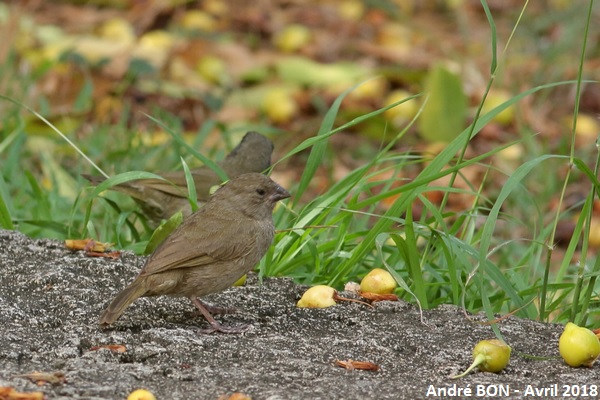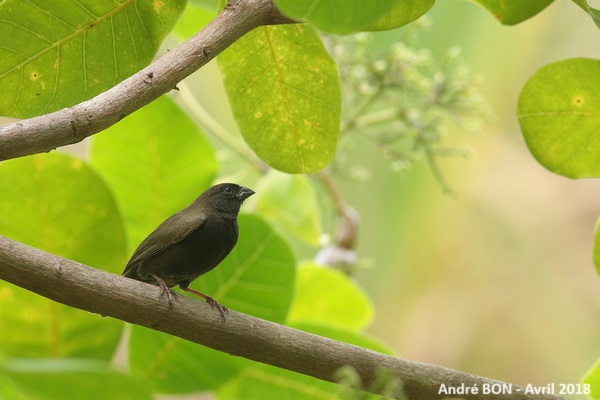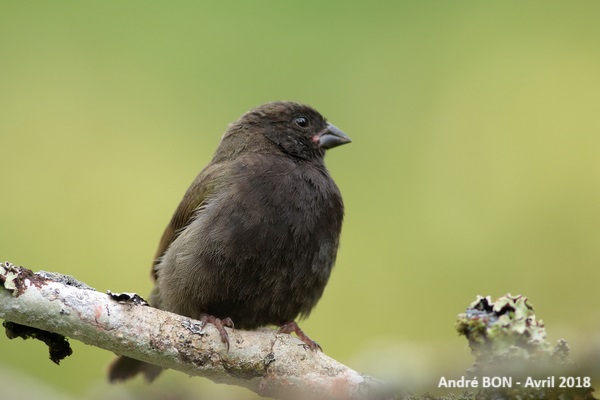



| Black-faced Grassquit (Melanospiza bicolor (Linnaeus, 1766)) |




|
|
Scientific name: Melanospiza bicolor (Linnaeus, 1766) Common name: Black-faced Grassquit Other names: Old scientific name Tiaris bicolor. French name: Cici verdinière, Sporophile cici. Order: Passeriformes Family: Thraupidae Size: Body size: 10 to 12 cm; Weight: 7 to 13 g. Habitat: Open and semi-open areas, clearings, scrub, roadsides, plantations, parks and gardens. Food: Mainly grass seeds collected from the ground, but also occasionally some buds, flowers and fruits, small insects during the breeding season. Nesting: The nest is a large ball of plant fibres with an opening on the side. It is usually placed at a low height, or even at ground level, in a bush. There may be several clutches per year of two to four eggs. Migration: Sedentary. Geographic area: West Indies, rare in Cuba, Tobago but missing in Trinidad. North coasts of Colombia and Venezuela. |
The Black-faced Grassquit is a small passerine bird with the short, thick, conical beak typical of grain-eating birds. The silhouette is quite rounded with a short tail. There is a significant sexual dimorphism. The male has black face, throat, chest and belly. Upper side, wings and tail are dark olive green. Females have olive-grey upperparts and light grey underparts. The bill is grey while it is black on males. Juveniles resemble females. There are 8 subspecies which show small differences in colouration such as the extent of the black zone on males for example. The subspecies present in the Lesser Antilles is Melanospiza bicolor omissus. |
| [To know more about the Black-faced Grassquit] [Next picture] [Top] |

|
Here is a male with black underparts and olive green upperparts. |
| [To know more about the Black-faced Grassquit] [Next picture] [Previous picture] [Top] |

|
Here is the female of less dark colour (unless it is a juvenile). |
| [To know more about the Black-faced Grassquit] [Next picture] [Previous picture] [Top] |

|
We observed this Black-faced Grassquit in the beautiful gardens of Habitation Clément. |
| [To know more about the Black-faced Grassquit] [Previous picture] [Top] |

|
We observed this Black-faced Grassquit in the Balata garden where you absolutely must go when you visit Martinique. |